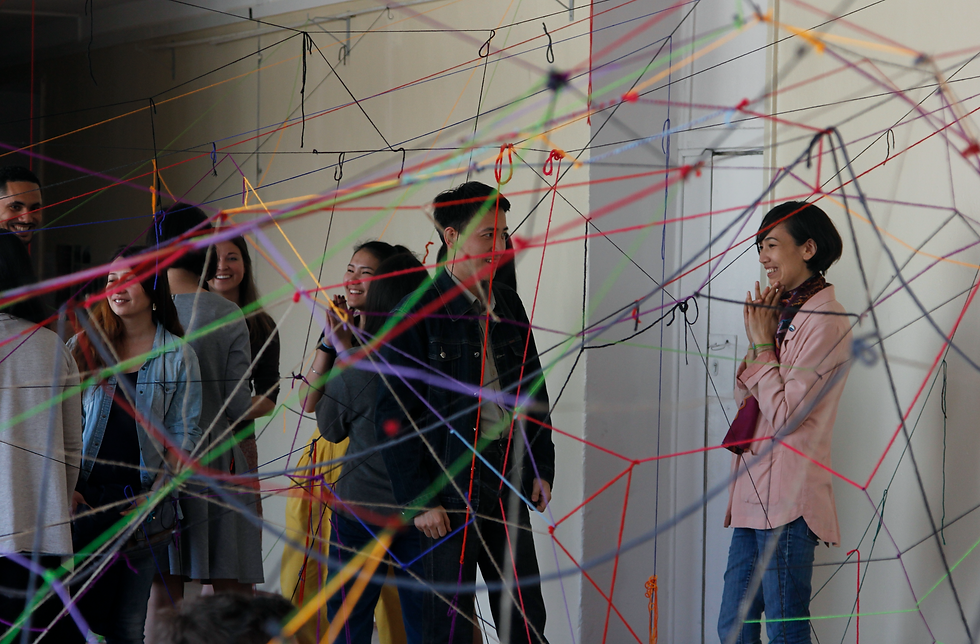Step, Two, Three Exhibition
- Michael Hoepfner
- Apr 18, 2016
- 3 min read

STEP, TWO, THREE
To walk is the most simple way to explore our environment. It is a practice in everyday life: we walk to our office, to the supermarket or to meet a friend; mostly we do this without reflecting on where we are, we look out for traffic, or at shop-windows.
For visual artists, walking was since early modernity a strategy to get out of the studio, the Art Academy, into life on the street, to experience the new modern city; but also to run away from it all, get into nature and look at one mountain - like Cezanne did.
If artists walk out it sometimes means anarchy like the Surrealists or political protest like the Situationists; in Land Art around 1970 artists the first time used walks to leave the city as a concept to get in touch with nature again -it was the time of the early environmental movement.
In the last twenty years or so to walk out and get in direct contact with reality completely changed through the everyday use of modern media and information: if you want to get information about a street everyone uses Google Streetview or online maps, or other forms of information; they guide us, we look at it on a screen in our homes; but what do they tell us about a certain place? What is the meaning of place, of site in our times? What is the meaning of movement of the body, in a street, on a track, a path, in a landscape? What can this slow movement tell us?

STEP , TWO, THREE started with a two one-day walks from the center of Bishkek to the outskirts where AUCA is situated; from there we walked over the hills until we reached the mountains and nature was clearly visible; for the participants it seemed first strange to walk in your own city; but out on the streets they realized how new everything looks when you really look at it, when you become a passer-by, watching out for the next street, alley, or even hole in the wall to climb through.
From AUCA it takes perhaps 500 meters to leave the last streets and the dumped trash of the city behind and dive into a gorge that lead us through the hills. The soundscape changes: birds, bees, grass in the wind. A dead hawk next to the road. Making the way through bushes; looking at snowcapped mountains - finding the hill in front of them and defining the road to this hill; what is it to be here? A ruined farmhouse tells a story we do not know.

Each hikers body moves, changes and becomes part of his/her own pace; big steps, small steps; human steps define and create space, they define place and it is in human nature that place has to be marked;
A walk results in certain experiences; but the question is how to talk about these very personal experiences; how to document them and how to make art with it?
On our walks each of the artists carried some yarn and used it to mark the trail in different ways; yarn in Kyrgyz culture played a significant role to mark a place: it not just marked places where natural spirits were supposed to be found, it was woven and thus used to create architecture to survive in nature.
All these thoughts on walking are brought back into the exhibition space: how to move in a landscape, how to create place, how it might create architecture through the movement of our body with a simple material that one can carry.

The installation STEP, TWO, THREE might on the first look be chaotic and senseless; but looking closer one realizes that there are passages through it, spaces that open like little tents, paths that let everybody experience the installation through movements. The architecture itself is moveable, uses tense and loose parts like a body that walks - like the bodies of each participant of the workshop group.
Art has the power to transform experiences;
A walk can become art and art can become a walk.




















Comments